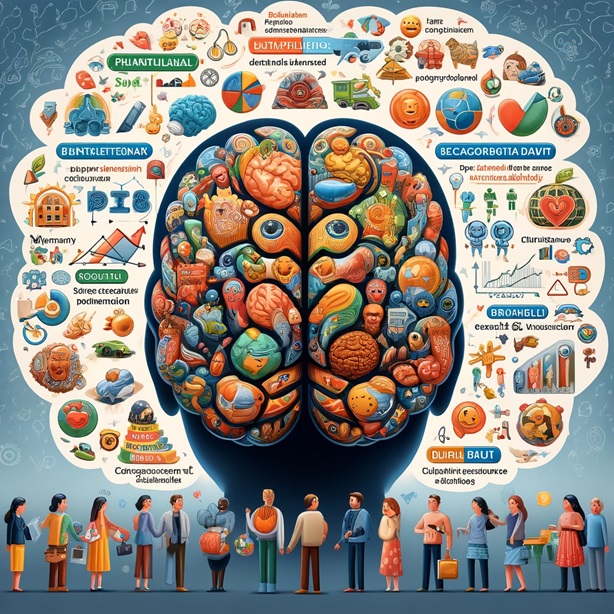Introduction to Bilingualism and the Brain
Bilingualism is the ability to fluently speak two languages. Beyond the apparent communicative advantages, bilingualism has a profound impact on the brain's structure and function. This capacity goes beyond cognitive reserve—the brain's resilience to damage or decline. Recent studies have unveiled that bilingualism can enhance various aspects of cognitive function, improve control over attention, and even contribute to delaying the onset of dementia symptoms. This section will delve deeper into the neural mechanisms activated by bilingualism and how they differ significantly from those in monolingual individuals.
Enhanced Executive Function
One of the most significant benefits of bilingualism is the enhancement of the brain's executive functions, which include skills such as problem-solving, mental flexibility, and multitasking. The constant management of multiple linguistic systems bolsters the brain's executive control circuitry. This is because bilingual individuals regularly engage in language switching and selection, thereby exercising the neural networks associated with these high-level cognitive processes. Neuropsychological tests and neuroimaging studies reveal that bilinguals have enhanced connectivity in the dorsolateral prefrontal cortex, an area crucial for executive function.
Improved Memory and Attention
Bilingualism has been linked to better working memory—our ability to hold and process information over short periods. Moreover, bilinguals often outperform monolinguals in tasks requiring selective attention and the inhibition of irrelevant information, showcasing enhanced control mechanisms likely due to the frequent suppression of one language while using the other. These findings suggest that the bilingual brain operates with a heightened level of efficiency, allowing for quicker response times and better attentional control.
Greater Neuroplasticity
The bilingual brain exhibits a heightened level of neuroplasticity. Bilingual individuals can adapt to new or changing cognitive tasks more efficiently, likely stemming from their lifelong practice of navigating between languages. This flexibility extends to learning new skills and recovering from brain injuries, making the bilingual brain a model of cognitive adaptability. Continuous engagement in linguistic challenges promotes the growth of new neurons and the formation of new neural pathways, enhancing the brain’s overall ability to adapt to cognitive challenges.
Cultural and Emotional Intelligence
Bilingualism fosters a deeper understanding of different cultures, promoting empathy and emotional intelligence. The cognitive effort to understand and communicate in different linguistic contexts enhances an individual's ability to read social cues and understand others' perspectives, translating to more profound interpersonal skills. This enhanced cultural awareness can lead to more effective communication in a globalized world and can improve personal and professional relationships.
Protection Against Cognitive Decline
Engaging in bilingualism is akin to a mental workout. Like physical exercise for the body, it keeps the mind sharp and can provide protective benefits against age-related cognitive decline. Studies suggest that bilingualism can delay the onset of Alzheimer's disease and other forms of dementia, underscoring its potential as a powerful cognitive reserve enhancer. The mechanisms behind this phenomenon involve more than just active neural networks; they also include the establishment of a more robust endocrine stress response, which helps protect the brain from age-related damages.
Considerations for Cultivating Bilingualism
While the cognitive benefits of bilingualism are clear, they do not arise overnight. Achieving proficiency in a second language requires consistent practice and exposure. Educational systems and societal support play crucial roles in cultivating bilingual environments, where the cognitive benefits can be fully realized for individuals and communities alike. Strategies for integration include bilingual education programs, community language initiatives, and policies that encourage multilingual communication in public services.
Conclusion
The cognitive benefits of bilingualism extend far beyond a mere cognitive reserve. The bilingual brain can teach us much about cognitive flexibility, the potential for lifelong learning, and the overarching resilience of our cognitive systems. By embracing bilingualism, individuals can unlock a host of cognitive advantages that benefit all aspects of life and society. The profound impact of bilingualism on cognitive processes underscores the value of language learning in fostering an intellectually enriched and cognitively resilient society.
